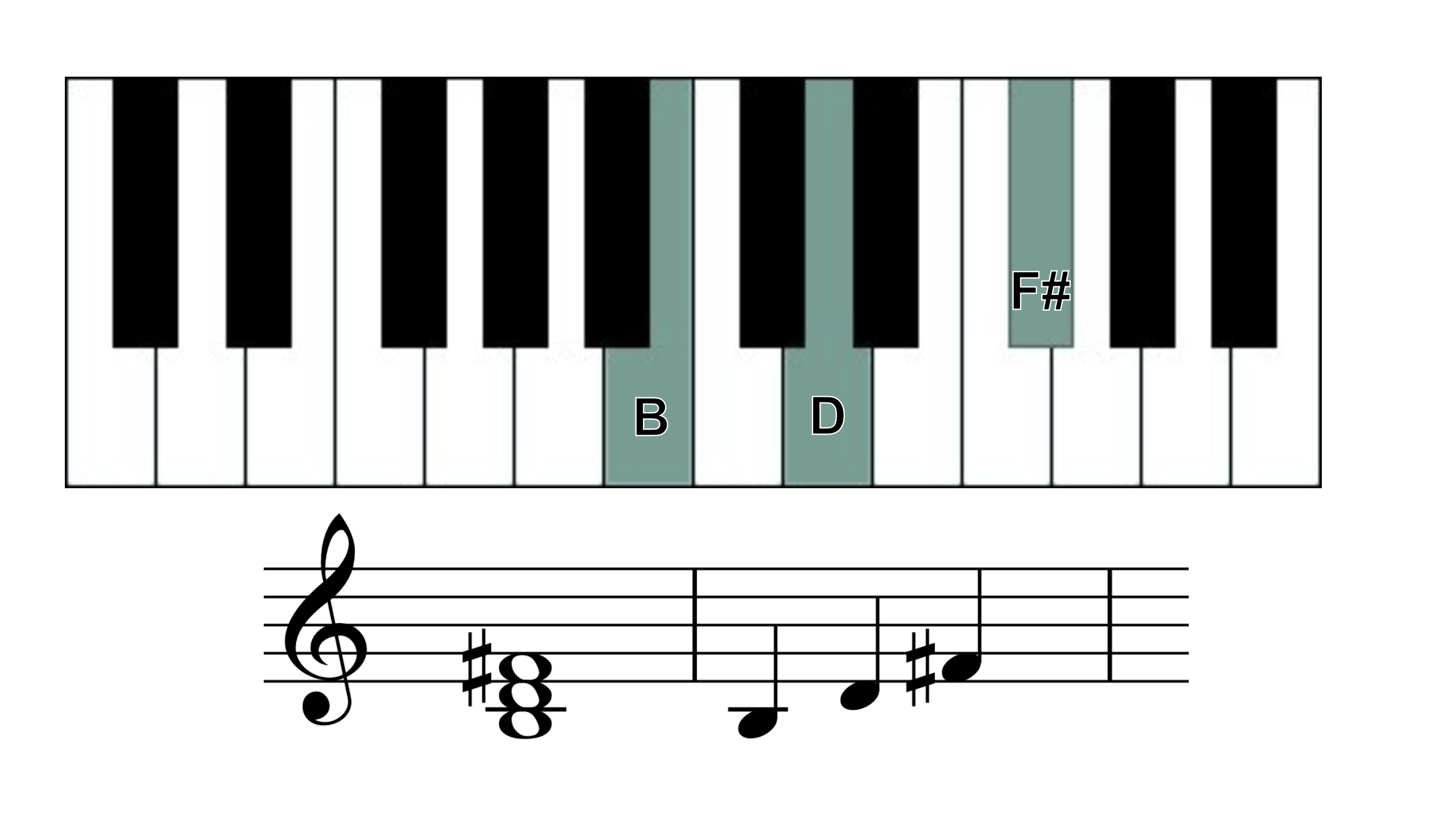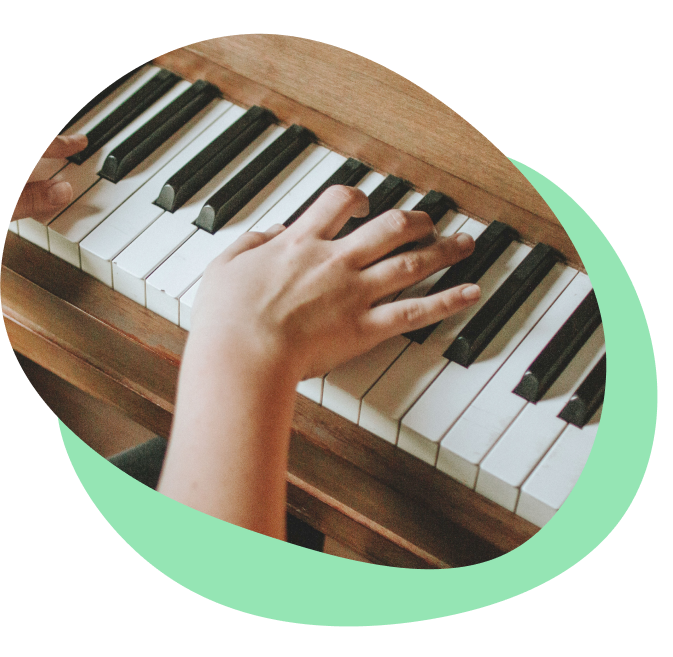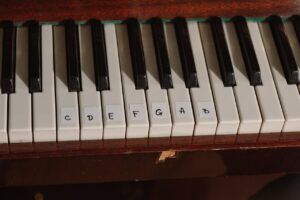The B minor chord adds emotion and weight to your music, it’s more serious and expressive than a major chord. Do not worry though, Skoove is here to help. In this article we will look at how to play the B minor chord, all of its inversions and which fingers to use for each. We will also take a look at some common chord progression and some great songs that use a B minor so you can master it in no time. Let’s dive in!
How to play the B minor chord in root position
To play the B minor triad you need three notes: B, D, F#. To start, find B, the white key just after the group of three black keys. Then add D and F# (a black key).

The notes in a B minor chord piano are B, D, and F#.
The B minor chord notes are called: the root (B), third (D) and fifth(F#). Together, they create a slightly sad or emotional sound.
To play this chord in its root position (basic form) with your right hand, use these fingers:
- F# – Fifth finger (5)
- D – Third finger (3)
- B – Thumb (1)
For the left hand, use the following fingers:
- F# – Thumb (1)
- D – Third finger (3)
- B – Fifth finger (5)
What are the inversions of the B minor chord?
The inversions of the B minor chord are made by mixing up the order the notes are played in. Chord inversions let you play the same chord with a different sound and change how you hear each note of the chord.
How to play B minor 1st inversion?
To play the first inversion of the B minor piano chord, start with D as the lowest note. Next, play F# above it, and finally, add a B as the highest note. This new order gives the chord a new sound that can be useful for moving between other chords.

For the right hand, use these fingers:
- D – Thumb (1)
- F# – Middle finger (3)
- B – Fifth finger (5)
For the left hand, use these fingers:
- D – Fifth finger (5)
- F# – Third finger (3)
- B – Thumb (1)
How to play B minor 2nd inversion?
To play the second inversion of the B minor chord, start with F# as the lowest note. Then, add a B above, finally add D as the highest note. This inversion gives the chord a different sound and is often used to make chord transitions smoother.

For the right hand, use these fingers:
- F# – Thumb (1)
- B – Middle finger (3)
- D – Fifth finger (5)
For the left hand, use these fingers:
- F# – Fifth finger (5)
- B – Third finger (3)
- D – Thumb (1)
Common chord progression in the key of B minor
The B minor chord progression is used in many genres, from rock and pop to jazz and classical music. A Bm chord progression often includes chords like Bm, D, A and F#. Here are some popular B minor chord progressions:
- Bm – G – D – A
- Bm – A – G – F#
- Bm – F#m – G – Em
- Bm – G – A – F#
These sequences show the uses of a B minor chord progression, they can give a range of moods from sad to happy. They are a great way to put your knowledge of piano chords to the test. To understand these chord symbols and how to play them check out the Skoove’s tailor made beginner chord progression courses.
Popular songs to play with the Bm piano chord
Something Just Like this – Coldplay
Piano chords generator
💡 If you are reading this from a mobile device, rotate it to display the tool in full width.
1. Click on “Chords”
2. Choose the “Root” of the chord
3. Choose the “Chord qualities” (major, minor, etc.)
4. Click “Display”
Author of this blog post:
Matthew Dickman

With over a decade of experience in music education Matthew holds a BA in Music from Paul McCartney’s LIPA and an MA in Composition from the University of Salford. Mathew has developed a distinctive compositional voice and approach to music theory education through his research and work in the music industry. Matthew’s writing for Skoove combines experience from orchestral and media composition, and as a gigging jazz musician, to create a wholistic and accessible pedagogy for musicians of any level. Away from music, he enjoys reading and exploring nature to expand his horizons and knowledge contributing to his holistic teaching style.














